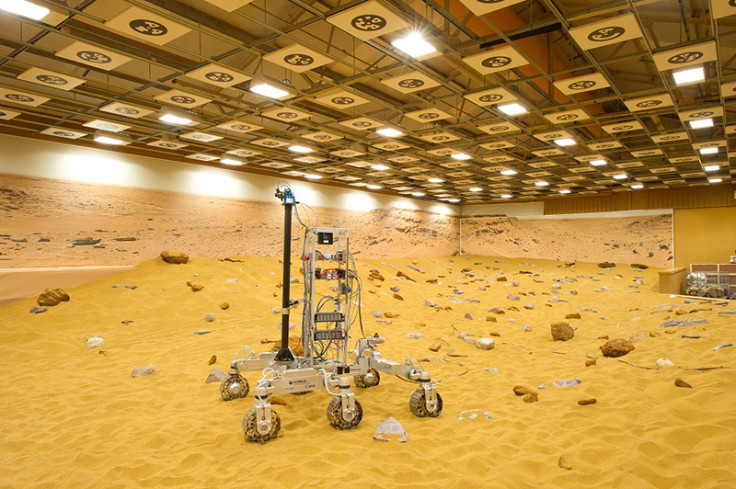Space rover called Bruno Mars tested in bid to find alien life on Red Planet

Three self-steering space rover prototypes – including one called Bruno – are being tested at a specially-designed sandpit in Stevenage, Herts in the hope their descendent will be able to explore beneath the surface of Mars in a bid to find alien life. The rovers – the others are called Bryan and Bridget – have been designed by Airbus Defence & Space (ADS) and a six-wheeled rover based on their design will be sent to the Red Planet in two years' time.
The difficulty with guiding rovers by remote control on Mars is that the planet is so far away it takes 40 minutes for a signal to reach the vehicle and return to earth. What's special about the three rovers being built in Hertfordshire is that they are able to compose a three-dimensional map of the terrain ahead and then work out the best way to get there.
Head of the team assembling the prototypes at ADS Dr Ralph Cordey said: "It's not possible to drive this sort of machine with a joystick. You'll crash it. So this rover is designed to be semi-autonomous. It can produce its own 3D map of the area ahead of it, look where it's being asked to go, and plot its own path. It's aware that some rocks it can't get over and has to drive round, and it can see ditches and sense what slopes are safe to climb."
Although water has been found on the surface of Mars, the environment is so hostile most astro-biologists believe it would be impossible for life to survive. "The surface of Mars is not a nice place for life," says Dr Cordey. "There are cosmic rays that bombard the surface, and energetic particles from the sun, and the surface chemistry is very reactive so that any organic material would be rapidly oxidised. The place to look for life is under the surface, and that's what this mission is doing that no other mission has."
The perfected Mars rover will be able to drill down to a depth of two metres, extracting samples which can be analysed on a mobile lab. Scientists hope it may be able to find evidence of what would be probably the most extraordinary discovery in human history: proof of life beyond earth. If life was found on our nearest neighbour, astronomers believe it would provide strong evidence that life exists throughout the universe.
In April Major Tim Peake will attempt to pilot one of the prototypes into a simulated cave from aboard the International Space Station, created by plunging half of the test area into darkness. However before Bruno, Bryan and Bridget boldly go forth at a top speed of 2cm per second, there is one problem they have to overcome: the rovers still get "confused" by shadows.
© Copyright IBTimes 2025. All rights reserved.






















